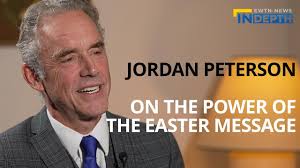The film Gravity just opened to box-office success, telling a story about astronauts Ryan Stone (Sandra Bullock) and Matt Kowalski (George Clooney) who are stranded in space after satellite debris destroys their space shuttle. Cut off from contact with Earth (voice of Ed Harris, in a nod to his roles in The Right Stuff and Apollo 13), the two must try to survive. Spoilers, be warned, ahead.
Is this movie science fiction? It certainly has the feel of a science-fiction story. Its greatest achievement, however, is its stark realism, in particular the beautiful and realistic visuals. All of the spacecraft, the technology, and (with one major exception) the events that happen are real spacecraft and technologies, accurately portrayed. None of the elements are “speculative.” Gravity is not science fiction, but a disaster film set in the world of present-day spaceflight.
One area where realism is almost entirely sacrificed, and understandably so, is in the depiction of distances between objects orbiting Earth. There is no way that the characters could have managed to fly from the space shuttle docked to the Hubble Space Telescope, to the International Space Station, and to Shenzhou as they do in the movie. Each of these orbits at different altitudes and inclinations. It’s like making a film in which someone survives the Titanic by just swimming to shore.
Still, for dramatic purposes, belief may be suspended, and the plot is straightforward: a sequence of effect-packed events the protagonists must endure to survive. Like all action movies, the characters are given emotional backgrounds with “issues” that must be worked through: In this case, Stone’s tendency towards despair and passivity in the face of tragic events. The drama is sometimes a bit overwrought and just shy of contrived. But it hints at a religion-friendly perspective.
Stone lost her four-year-old daughter in a freak playground accident, and has coped by engaging only with her work, remaining distant and aloof otherwise. After the disaster and subsequent loss of Kowalski, she is the sole survivor and is prepared to give up. Having made her way aboard a crippled Soyuz capsule, Stone mourns the fact that she has never learned to pray, in part because she has never really believed in anything. She shuts off the oxygen to the cabin and prepares to die.
Suddenly, the lost Kowalski reappears outside, climbs aboard the capsule, and gives her a humorous pep talk, encouraging her to keep trying. He also reminds her that the Soyuz’ landing engines still have fuel, possibly enough to get her to the Chinese space station. (A science aside: Stone could have survived the brief exposure to the vacuum that she encounters in this scene when Kowalski opens the hatch, but not without consequences, and the fact that she’s just fine is a clue that something isn’t quite right about what follows.)

Lost and found in space: Sandra Bullock as Dr. Ryan Stone in Gravity
Who or what is Kowalski in this scene? The film is properly ambiguous. Is he a figment of Stone’s oxygen-deprived brain? Kowalski himself, communicating from beyond the grave? An angel? In any case, his message works. Stone awakes to find herself alone, turns the oxygen back on, and follows Kowalski’s suggestion to find the Chinese station, which is rapidly deorbiting, but still has a Shenzou capsule available.
During this final sequence, there appear at least two explicitly religious scenes: Aboard the Russian Soyuz, an Orthodox ikon above the spacecraft’s “dashboard”; on the Chinese Shenzhou, a statue of Buddha in the same location. Significantly, these religious images are featured on board the two spacecraft that play salvific roles. (The parallel figure we see aboard the crippled American space shuttle is a figurine of Marvin the Martian – the buffoonish cartoon alien bent on universal domination. Commentary, perhaps?)
When Stone finally reaches Earth, her capsule sinks to the bottom of a shallow lagoon. She must swim to the surface and pull herself, alone (rescue crews haven’t had arrived yet) onto the shore of an Edenic landscape. Climbing onto land, unused to the eponymous “gravity,” she needs a moment to learn to walk again – the baptismal and rebirth motifs of her redemption story here fitting perfectly into the actual consequences of spaceflight.
Throughout, Stone is always just a hair’s breadth away from becoming just another piece of cold debris floating through the vast, silent, beautiful cosmos. Vast distances and loneliness are ubiquitous, emphasized by the fact that Clooney and Bullock are the only actors ever seen alive in the entire movie. In one moment, Stone almost acquiesces to the “truth” of this empty loneliness, but through submission to a seeming act of revelation and a prayer, she manages to keep her life and is saved.
But as is Hollywood’s usual way, this saving faith is generic, grounded in eclectic religious symbols – not really faith in anything in particular. To be sure, this kind of ambiguity is often found in good literature. Anything more than hints and suggestions can descend quickly into heavy-handed sermonizing rather than good storytelling. Yet Stone’s discovery of the need for faith calls for the effort to ground that faith in something solid.
In the grandest scheme of things, Stone’s position marooned in space is really not that different than ours, sailing through the same vast space, albeit in our case on the Earth. Death is nevertheless a possibility at any moment. So what is this faith that finally saves? A delusional assertion of self in a fundamentally meaningless cosmos? A feel-good, eclectic spirituality? Or, to take a hint from the film’s respect for hard scientific fact, could there be a faith actually based in solid truth?
These questions aren’t answered in Gravity. But one thing the film makes clear, amidst its impressive visuals and exacting accuracy: for man, lost in the cosmos, to really live requires more than technical and scientific fact. It takes a faith and a hope that come from beyond us.















